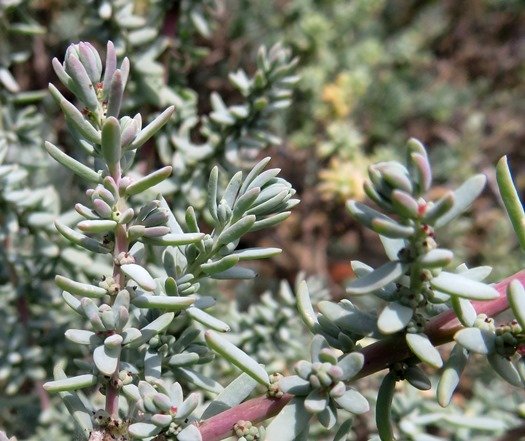Suaeda fruticosa

Author: Ivan Lätti
Photographer: Thabo Maphisa
Suaeda fruticosa, in Afrikaans commonly the brakbos (brackish bush) or inkbos (ink bush), is a much-branched, evergreen shrub, a halophyte that reaches heights from 60 cm to 1 m.
The small, bluish leaves are succulent, smooth and thick, the younger stems often reddish before they become woody. The leaf-shape is strap-like or oblong. The inkbos name is the result of the staining of sheep wool by the leaves, the brakbos one relates to growing in brackish soil.
The species distribution is widespread, mainly along coasts of Africa, Asia and Europe. In South Africa it is known in the western and southern region, found in the Northern, Western and Eastern Cape as well as the Free State. The photo was taken in the western Little Karoo near Barrydale.
The habitat is arid and semi-arid, karoid and coastal flats where the soil is sandy or loamy, often brackish, the plants even growing in salt marshes. Near the sea these salt resistant plants may grow down to near the spring tide high water mark. The plants prefer full sun. The species is not considered to be threatened in its habitat early in the twenty first century.
S. fruticosa is rich in potassium; it has been burnt as a source of potash for making soap and glass. The leaves and seeds are in some places eaten raw or cooked. They taste salty. There may still be species identification issues across the worldwide range of this plant, as the Karoo plants are said to cause diarrhoea in stock. There are medicinal applications involving poultices and infusions, relating to ophthalmia and stomach conditions (Vlok and Schutte-Vlok, 2015; Bond and Goldblatt, 1984; iNaturalist; Wikipedia; http://temperate.theferns.info; http://redlist.sanbi.org).

